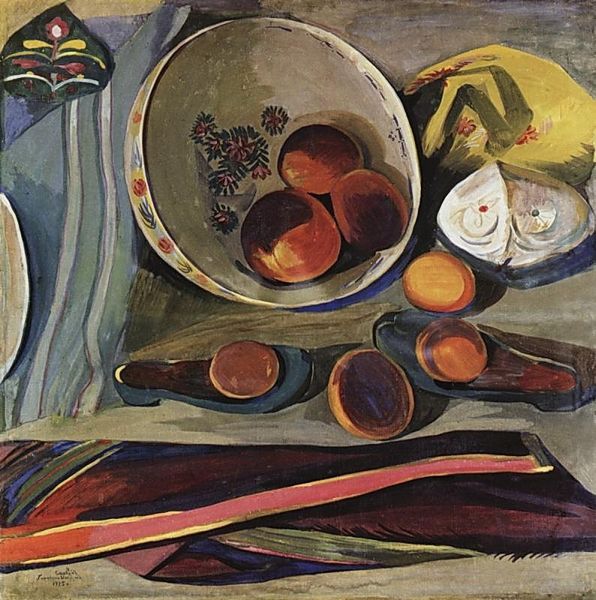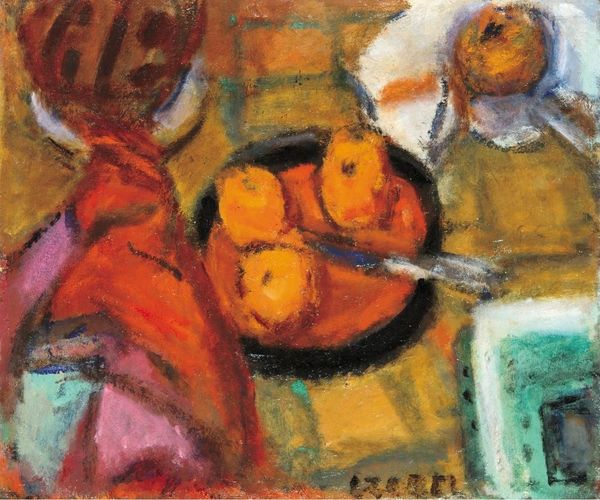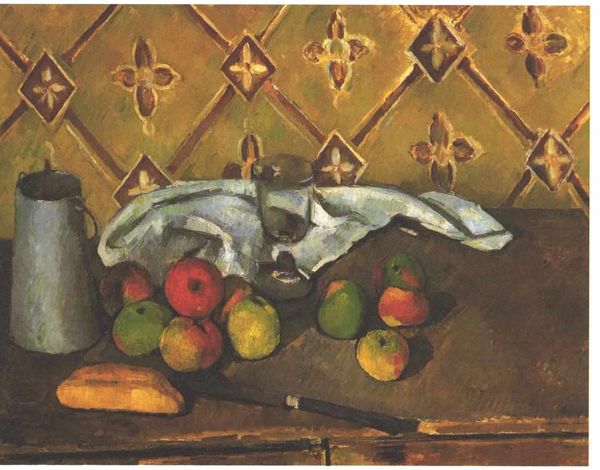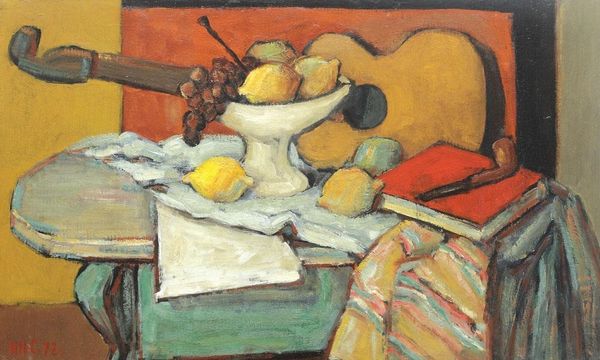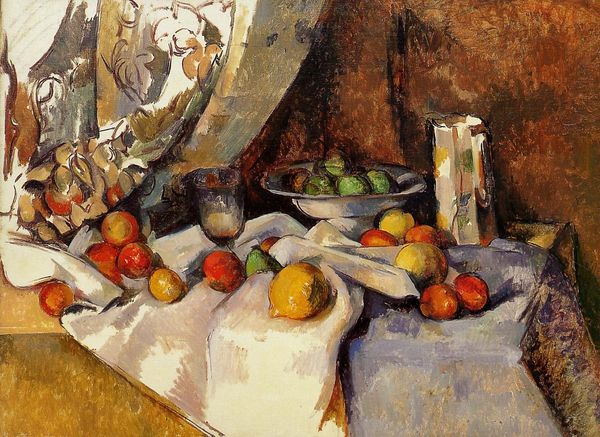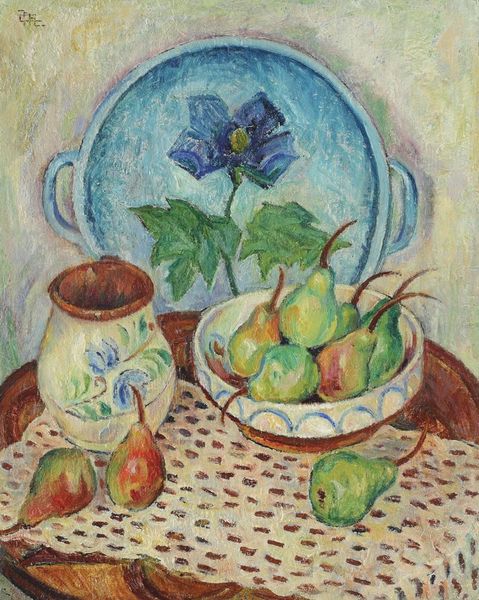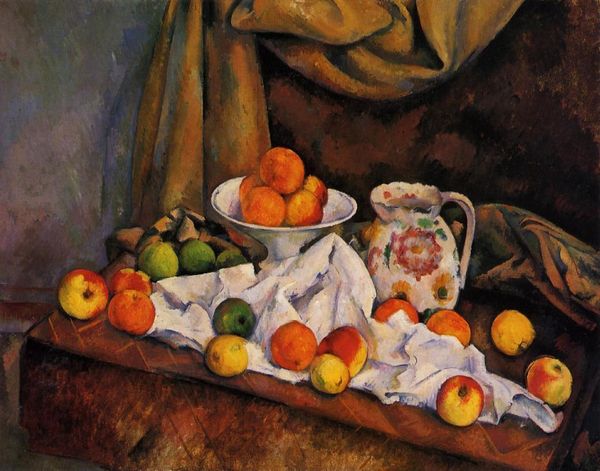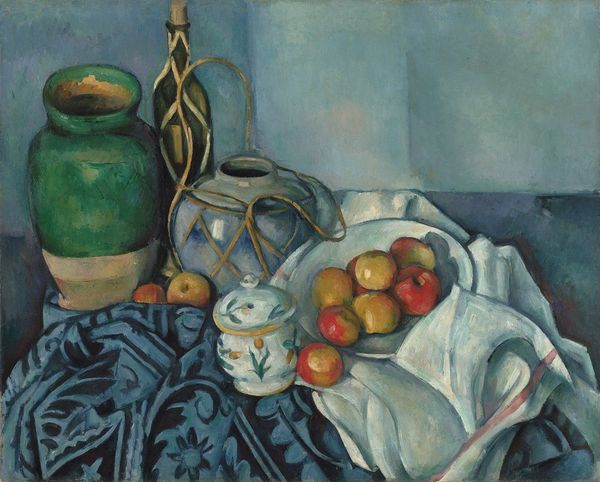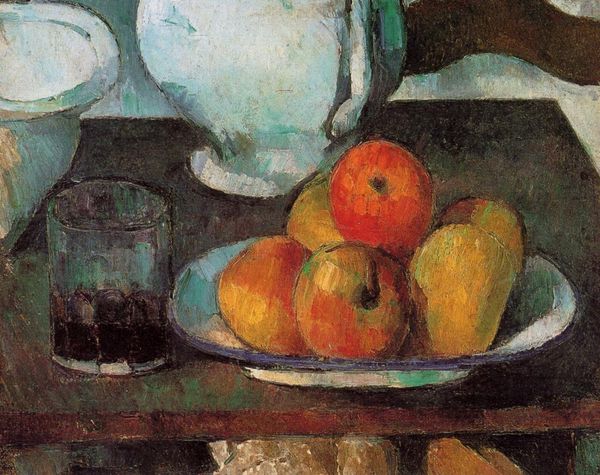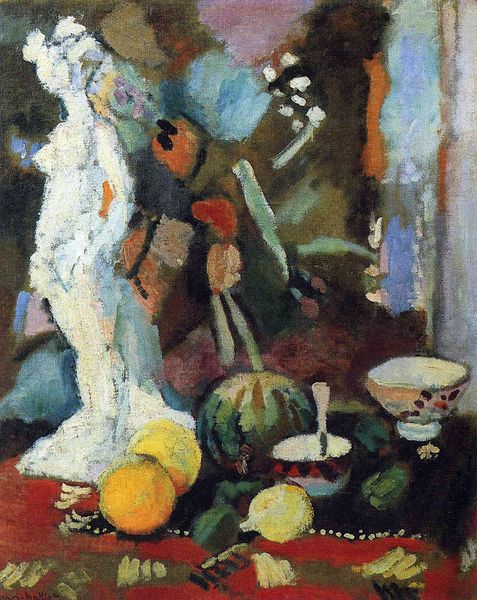
Dimensions: 60.6 x 73.3 cm
Copyright: Public domain
Curator: Let's turn our attention to "Still Life with Oranges," painted by Paul Cézanne around 1900, now housed here at MoMA. It’s a striking example of his post-impressionist approach. Editor: My first thought is of intense domesticity—the floral pattern of the fabric almost vibrating with energy, contrasted against the more muted, utilitarian objects placed atop it. Curator: Precisely. Cézanne challenges the established conventions of still life. He elevates everyday items, blurring the boundaries between functional object and high art subject. His use of commonplace items, like oranges, pots and tablecloth, is deliberate. It focuses our attention to the means by which they are made and come into use within the context of 19th century Europe. Editor: And he does so through his deliberate construction of the picture plane. The rough, visible brushstrokes, especially on the fruit and drapery, underscore the material quality of the paint itself. It's less about illusionism and more about confronting us with the act of creation, of building form through layers of pigment. We see this raw labor in his approach to laying down materials and forms with only hints to outline figures; as if we have a still from the artist in motion. Curator: Exactly! This seemingly simple arrangement reveals much about the power dynamics embedded within artistic representation. Think of the shift from the idealized fruits and sumptuous materials of traditional still lifes to this rather…humble display. Cézanne's inclusion of ceramics, the jars in particular, as commonplace kitchen materials highlight the impact of burgeoning commercial techniques on the culture surrounding the artist. Editor: I agree, the objects he chooses aren't just neutral stand-ins; they're indicative of their own mass-produced quality during his era. The tableware has the quality of a commercial product of the time. Their appeal derives from not being expensive, and his still-life grants this object permanence while questioning art itself. Curator: It highlights his departure from the academy's traditional focus on history and grandeur. We get to reflect on not just this painting, but also the circumstances which gave rise to a consumer base that both elevates an artist like Cézanne, while creating an atmosphere for cheaper wares and less prestigious trades like pottery. Editor: Indeed, examining the processes inherent to creation makes apparent Cézanne’s skill. His paintings speak not just to the illusion of life, but the life and materials that produced both object and painting. Curator: And that really captures Cézanne’s genius, his power to find profound meaning in the mundane, and use it to redefine artistic norms. Editor: Absolutely. It's a testament to how attentiveness to materiality can unlock fascinating socio-cultural narratives.
Comments
No comments
Be the first to comment and join the conversation on the ultimate creative platform.
